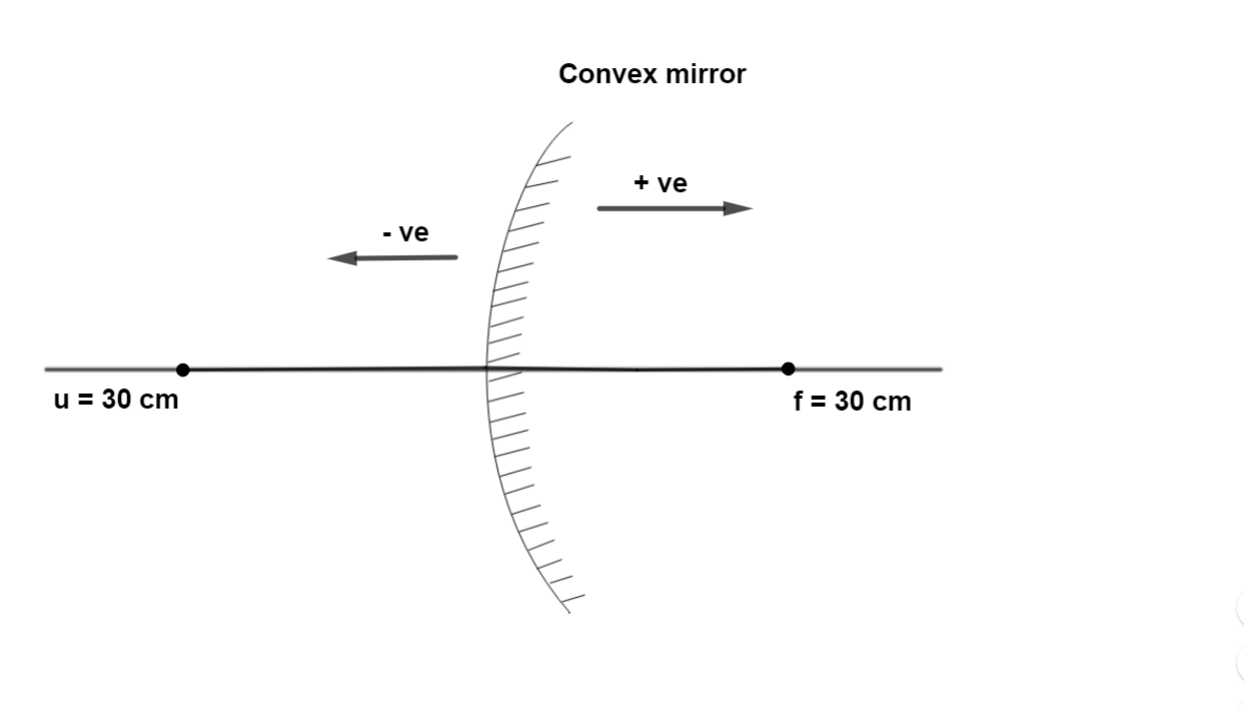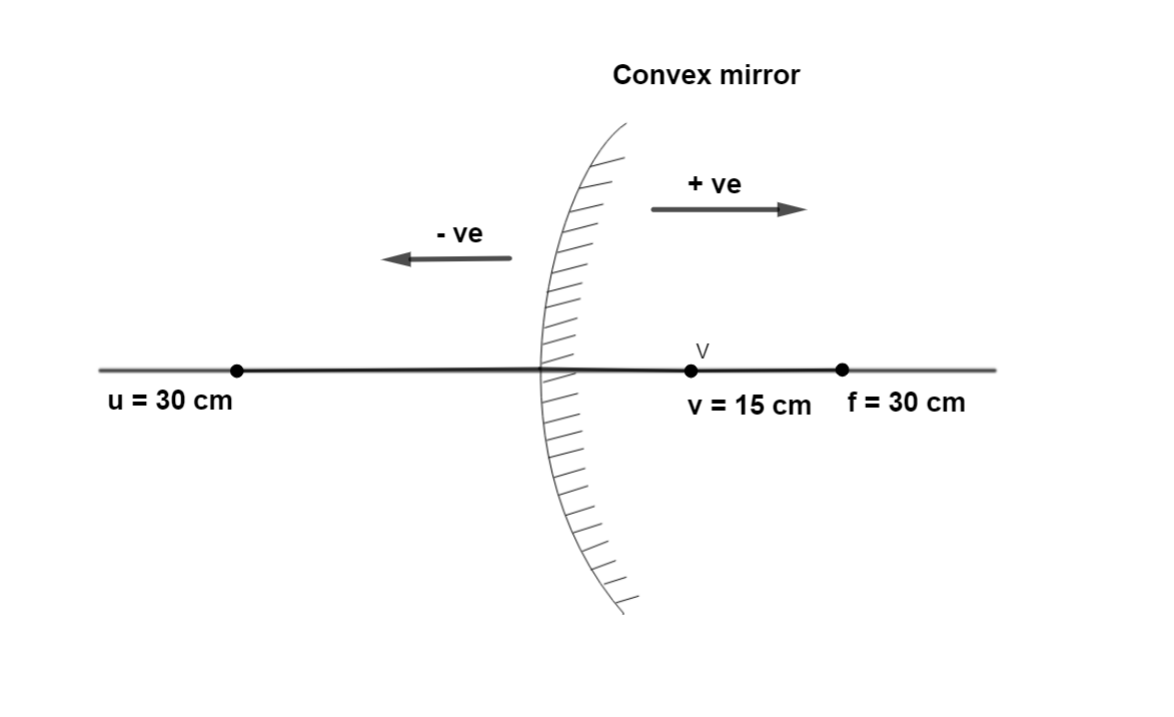Question
Question: A point object is placed at a distance of 30 cm from a convex mirror of focal length 30 cm. The imag...
A point object is placed at a distance of 30 cm from a convex mirror of focal length 30 cm. The image will form at
(A) Infinity
(B) Pole
(C) Focus
(D) 15 cm behind the mirror
Solution
To solve this question you should know what a convex mirror is and what a mirror is. With the general equation of the mirror equation, we can find where the image is formed with the given details in the question. Convex Mirror: A spherical mirror whose reflecting surface is curved outwards is called a convex mirror. Mirrors are good reflectors. A mirror can be made by silvering a metal surface with glass in front and paint at its back.
Complete step by step solution:

A point object is placed 30 cm from the convex mirror of focal length 30 cm.
Mirror formula: In a spherical mirror, there is a relation between object's distance u, image distance v and principal focus of the mirror f.
v1+u1=f1
Therefore, from the figure and given data
u = - 30 cm
f = 30 cm
Using the mirror formula,
v1+u1=f1
Substituting the values,
v1+−301=301
Upon simplifying, we get
⇒v1=302
⇒v1=151
∴v = 15 cm

Therefore, the image is formed 15 cm behind the convex mirror.
So, the correct answer is option (D)
Additional information:
Concave Mirror: A spherical mirror, whose reflecting surface is curved inwards is called a concave mirror It means reflecting (polished) surface faces the center of the sphere from which it is made.
Magnification by Mirror: The extent by which a mirror extends or reduces the size of an image with respect to an object is called the magnification factor of a mirror. It is represented by m. If the size of an object is h and its image by a spherical mirror is h’. Then magnification factor of mirror is
m = - uv=hh′
Note:
Convex mirrors are preferred over plane mirrors as rear-view mirrors because they give diminished images of objects and hence can cover a larger field of view. A convex mirror always produces a virtual image, because f is always greater than zero and u is less than zero so from the mirror formula the v will be always positive. Hence the image is always virtual.
